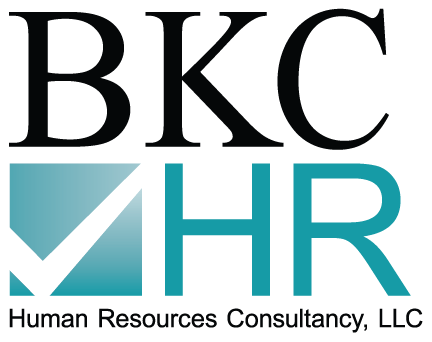 As part of sound financial management practices, management has a responsibility to evaluate its nonprofit organization’s ability to continue as a going concern (i.e., the organization’s ability to continue operating both financially and programmatically for a reasonable period of time). This review by management should occur every time the financial statements are prepared and made available to the users of those financial statements (no less than annually). The checklist included below identifies key items, as well as other indicators, that management should consider in documenting their assessment. Use of this checklist provides both management and the organization’s external auditors with a basis for evaluating certain financial stability factors. For more background information, see Lee Klumpp’s article, “Going Concern: What Nonprofit Management Teams Need to Know” on page 6.
As part of sound financial management practices, management has a responsibility to evaluate its nonprofit organization’s ability to continue as a going concern (i.e., the organization’s ability to continue operating both financially and programmatically for a reasonable period of time). This review by management should occur every time the financial statements are prepared and made available to the users of those financial statements (no less than annually). The checklist included below identifies key items, as well as other indicators, that management should consider in documenting their assessment. Use of this checklist provides both management and the organization’s external auditors with a basis for evaluating certain financial stability factors. For more background information, see Lee Klumpp’s article, “Going Concern: What Nonprofit Management Teams Need to Know” on page 6.
Going Concern Checklist for Nonprofit Organizations
Purpose – To assist a nonprofit’s management team in evaluating and documenting its assessment of their organization’s ability to continue as a going concern. Of course, there may be other indicators not listed here that should also be considered in management’s analysis.
For each indicator that applies, describe what mitigating factors, if any, may lessen the impact on the organization’s financial stability. Conclude as to whether the evaluation of these key items, indicators and mitigating factors raise substantial doubt about the organization’s ability to continue as a going concern, and whether that substantial doubt can be alleviated. Ensure that management’s plans are documented and determine appropriate financial reporting and disclosure requirements.
Use the following key items, where appropriate, in evaluating the indicators:
- The latest available interim financial statements and other key financial and operating data;
- Events after the statement of financial position (balance sheet) date;
- Minutes of meetings of the governing board and key committees of the board, including at least the executive, finance, audit and investment committees; and
- Correspondence with lawyers.
Community Support
- Decline in utilization of the organization’s services by the local community (fewer students, patients, visitors, members, concertgoers or other users)
- Decline in real dollar support through gifts (cash and in-kind), grants, bequests and member dues
- Decline in hours of time made available by volunteers
- Increasing incidence of turndown of grant requests
- Increasing reliance on very few different sources of support
- Criticism of the organization or its programs by public figures or media, sanctions imposed by programmatic or charity regulators, or being found out of compliance with charity watchdogs’ standards
- Concerns about the intent or ability of affiliated organizations to provide continuing support
Financial Stability
- A growing percentage of expenditures for basic operations funded by restricted grants
- A growing percentage of own-source unrestricted revenues committed to meet matching-fund requirements or needed to supplement restricted revenues for special projects
- Operating reserves appear inadequate to support the size of the operations
- Continuing decline or substantial deficit in operating income or unrestricted net assets
- Continuing decline or overdraft in cash and cash equivalents
- A net liability (unrestricted net asset deficit, exclusive of net equity in fixed assets) or net current liability (working capital deficiency) position
- Significant deterioration in key ratios (e.g., debt to equity, gross profit from business-type activities and, if applicable, days’ sales in accounts receivable and inventory turnover)
- Long overdue accounts, loans, pledges receivable or excessive inventory
- Difficulty in obtaining trade credit or in paying bills in a timely manner (e.g., due to negative cash flows)
- Organization is financing activities out of overdue suppliers and other creditors
Obligations
- A growing debt burden
- Fixed-term borrowings approaching maturity without realistic prospects of renewal or repayment
- Violations of loan or grant covenants where appropriate waivers are not likely
- A lender has refused to provide financing for operations or new activities, a line of credit or a guarantee has not been renewed or there have been loan defaults (principal or interest) or other deterioration of lender relationships
- Obligations to fulfill uneconomic long-term contracts
- Significant unfunded pension or other employee future benefit obligations
- Legal proceedings against the entity that may, if successful, result in judgments that could not be met
Current Revenues and Costs
- Cost per unit of service rising rapidly
- Rapid increases in fixed cash costs (salaries and fringes, rent, debt service or others)
- Number of employees per unit of service rising rapidly
- User fee rates rising rapidly (unless resulting from a deliberate management decision to reduce the amount by which such fees are subsidized from other revenue sources)
- Increasing incidence of revenue shortfalls
- Recent declines in profit margins from business-type activities
- A pattern of budget cost overruns, either overall or in specific programs/departments
- Proceeds of long-term debt or sales of long-term investments being used for current operating purposes
- Deferring needed maintenance of capital assets
- Low or declining funding of replacement of capital assets near the end of their useful life
- Failure to pay payroll or other taxes when due (Note: Also represents a possible personal liability)
- Inability to pay salaries or other expenses when due, or borrowing to cover such amounts shortly before payment
- Borrowing of cash or other assets from restricted funds, or other diversions of restricted resources to inappropriate purposes
Management Practices
- Earnings on investments declining disproportionately to general trends of investment yields
- Interest rates charged by lenders increasing disproportionately to general trends of interest rates, unwillingness of lenders to lend to organization or insistence by lenders on burdensome debt covenants
- Levels of receivables, inventory or prepaid expenses increasing faster than related activity would dictate
- Heavy reliance on the success of a significant project or new product
- Increasing incidence of funding source challenge or disallowance of expenses
- Loss of key employees or volunteers
- Violation of laws, regulations or other statutory requirements
- Financial and operating data provided to board members and management is delayed, unclear, or incomplete; explanations of key items and variances are unavailable or of doubtful validity
- Failure on the part of board members and/or management to understand and accept the seriousness of the financial situation
Industry and Environmental Factors
- Recent financial failures of similar organizations
- Recent technological developments that threaten a key program
- Recent changes in legislation or government policy that could have a significant adverse impact on the entity
- Key customers or suppliers have been lost or experienced financial difficulty
- Shortages of important supplies
- Labor disputes, strikes or work stoppages involving the organization or its key suppliers
- Uninsured or underinsured catastrophe, such as fire, drought, earthquake or flood
- Significant negative consequences from environmental remediation problems
- Threats of receivership or forced bankruptcy
Are there any other indications that the organization may not be able to continue as a going concern? If so, describe:
Conclusion – Based on management’s evaluation of the noted key items, indicators and mitigating factors, management should determine whether substantial doubt about the organization’s ability to continue as a going concern does / does not exist. Where substantial doubt does exist, consideration of management’s plans needs to be performed to determine whether these plans have / have not alleviated the substantial doubt. Management’s plans should be clearly documented and supported by appropriate and verifiable information.
Checklist completed by _____________________________________
Date ____________________
For more information, contact us at (908) 782-7900 or email info@bkc-cpa.com
By Dick Larkin, CPA, and Elizabeth Pilacik, CPA
This article originally appeared in BDO USA, LLP’s “Nonprofit Standard” newsletter (Spring 2015). Copyright 2014 BDO USA, LLP. All rights reserved. www.bdo.com




